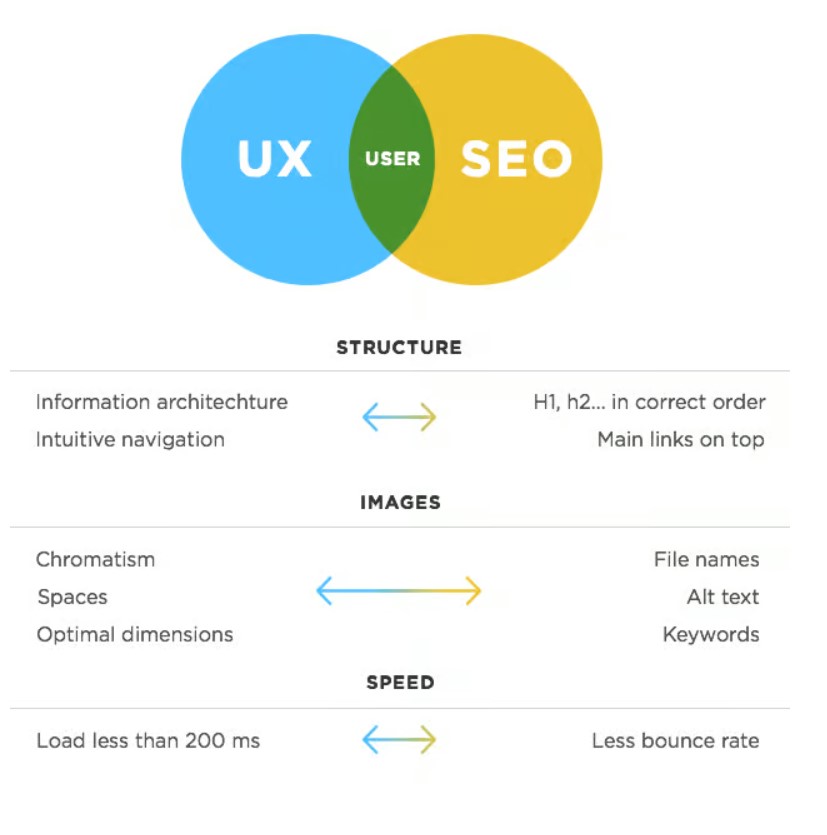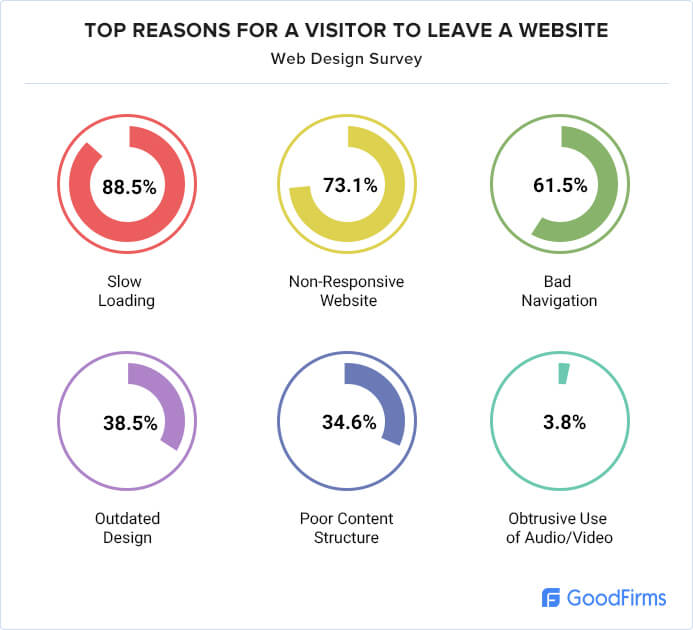Top Best Practices To Improve User Experience In SEO (2023)
Estimated reading time: 6 minutes
Did you know that user experience (UX) is one of the critical Google ranking factors of 2023? In fact, poor user experience results in low rankings, low conversions, and a high bounce rate. Today, more users interact on mobile devices and because of that user experience on all devices is important. Hence, it is essential that your website design reflects the brand and the best first impression for your visitors.
In this blog, we will discuss the impact of user experience in SEO and provide best practices for optimizing your website for both users and search engines.
By applying these tactics, you can ensure that your website provides a great user experience while also ranking higher in organic search results.
Need to know how well your website is performing?
What is UX in SEO?
UX or user experience is all about how users perceive and interact with a digital product. For example, when a website is easy to navigate, usable on mobile, with faster loading speed means it has a good UX.
Key elements that affect the UX are:
- Web design
- Mobile responsiveness
- Site architecture
- Page load speed
Also, when it comes to websites, strong UX keeps visitors there longer, offers a more pleasurable experience, and boosts conversions.
UX vs. SEO


Search engine optimization refers to the process of optimizing a website to rank on any search engine results page. And to rank webpages in search results, your website must be aligned with the search engine algorithms which consider over 200 ranking factors.
On the contrary, user experience is one of these Google ranking factors. With a good user experience, your website can be crawlable, improve conversions and more.
How is user experience important for SEO?


Positive user experience is important for search rankings for several reasons:
- 52% of consumers claim that a bad mobile experience has a negative impact on having faith in a company. (source)
- If a website has poor page load time, users are less likely to engage. (source)
- 23% of users who experiences a good web interaction will verbally spread the business to ten or more. (source)
- Conversion rates are high for a website which aligns with user queries and user satisfaction.
- E-E-A-T (Experience-Expertise-Authority-Trustworthy) content was introduced by Google to determine the quality of content.
How does UX impact SEO?
Now that you know the significant role of UX and SEO, how do you measure the impact of these?
Here are some user engagement and behavior metrics to determine how UX affects SEO. These can be referred to as user signals of website experience.
01. Time on Page
This metric, also referred to as "dwell time," shows how long a person stays on a web page before returning to the search results page. A website with a high stay time has information that is interesting and pertinent to user searches.
It demonstrates that the website is user-friendly and offers a satisfying browsing experience. Meanwhile, low dwell time means that the site's content did not match the search intent or target keywords of the user.
02. Bounce Rate
This user behavioral metric determines the percentage of visitors that leave a website after seeing just one page. High bounce rates can sometimes be an indicator of poor user experience design or keyword-stuffed, low-quality content. In other instances, high bounce rates show that visitors are quickly finding the information they are looking for and then leaving the page.
03. Engagement
Even though a solid content strategy is essential, a strong UX can increase user engagement itself. Intuitive site layout, clear navigation, and well-formatted content make it easier for users to access the information they need and engage with different aspects of a website.
Google rewards websites that provide visitors with accurate, accessible answers to pertinent search queries through informative, high-quality content. Clicks, dwell time, and other metrics are used to measure user engagement.
04. Pages per Session
This measure, often known as "page views per session," calculates the typical number of pages that visitors view during a particular session. When a user accesses a website, a session is started. When a user leaves the website or after 30 minutes of inactivity, the session ends.
To improve this metric, the website's content must be valuable and user-friendly, which ultimately helps Google’s rankings as well.
05. Rankings
Position in search engine results is determined by the aforementioned elements. The visibility of a page is determined by its position on a search engine results page. A page with a good rating and prominent placement will get more visitors; the first result in a Google search, for instance, receives 34% of all organic traffic, compared to the second result's 17%. With lower rankings, inbound traffic percentages decrease.
Rankings can change in response to changes in search engine algorithms, keyword competitiveness, and website age.
Read More: The Essential SEO KPI Metrics For B2B Marketing
What are the top UX SEO Best Practices?
Content creation
- Avoid keyword stuffing.
- Add infographics and visually appealing images.
- Make use of organized lists and bullet points.
- Compress images that are larger than 100 kb.
- Creating content that is helpful and related to user queries.
- Improve readability by dividing your text into brief paragraphs.
- Use headings that are informative and accurately summarize the content.
- Write brief, compelling, concise meta titles, and meta descriptions with the relevant keywords.
- Select images that are naturally light (light shades, fewer colors, less attention to minute details like gravel or leaves).
Technical SEO
- View how your web pages appear on various mobile devices.
- Reduce the use of JavaScript and CSS, particularly third-party scripts.
- Use the fonts that are currently installed on visitors' computers, or just switch to sans-serif.
- Use the PageSpeed Insights tool to test your URLs, then follow the recommendations for improvements.
- When contact forms and sliders are not present on the page, remove the CSS and JavaScript that support those features.
Read More: Mobile SEO: 9 Essential Best Practices And Tools
Conclusion
It is clear that UX SEO best practices have a significant impact on search engine rankings and user engagement. Dividing text into manageable paragraphs, using informative headings, incorporating images to support arguments, optimizing page speed, and reducing JavaScript/CSS usage are all important steps for improving your website's visibility in the SERPs.
Additionally, it is beneficial to use fonts already installed on visitors' computers as well as offer helpful solutions through your content. Taking these steps will help ensure you achieve higher-ranking positions and increased user engagement with your web pages.




